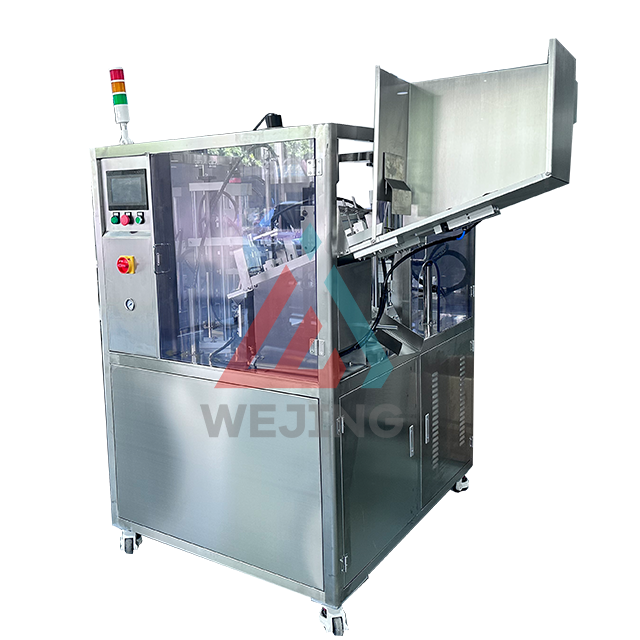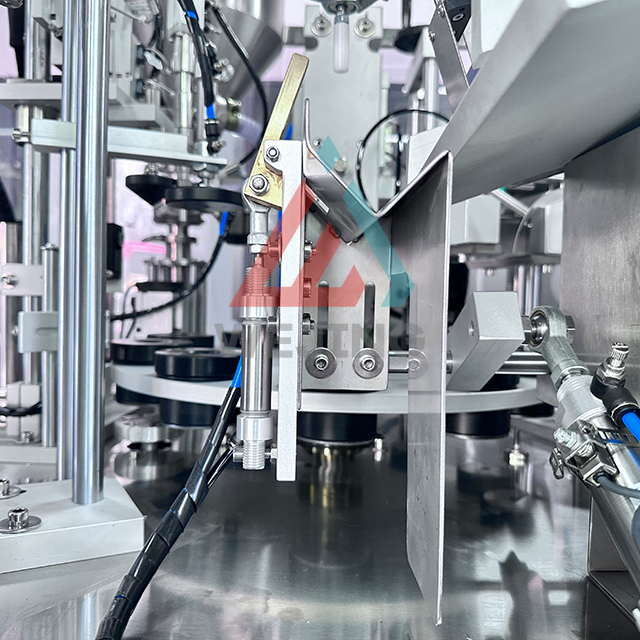
2024.6.6 update
Product Advantage:
1. High speed filling: Advanced laser filling technology is used to achieve high-speed filling process, greatly improving production efficiency.
2. High precision measurement: By using laser sensors for precise measurement, the filling amount of each container is ensured to be accurate and error free, reducing waste and errors.
3. Contactless filling: Utilizing the non-contact characteristics of laser, it avoids the potential liquid pollution and leakage problems that may occur in traditional filling methods.
4. Automation control: Equipped with an automation control system, it can achieve a series of operations such as automatic feeding, filling, sealing, and discharging, reducing manual intervention and improving production efficiency and product quality.
Operate Guide:
1. Preparation before starting up: Check whether the power and gas sources of the equipment are connected properly, ensure sufficient material supply, and check whether the quality and specifications of the materials meet the requirements. Clean the filling head, sealing mold, conveyor belt and other components of the equipment.
2. Parameter settings: According to the instructions on the operation interface, set parameters such as filling volume, tail sealing parameters, and production speed.
3. Filling operation: Place the container to be filled on the conveyor belt to ensure its correct position. The equipment will automatically perform the filling operation and accurately fill according to the set parameters.
4. Tail sealing operation: After filling is completed, the container will be transported to the tail sealing station, and the equipment will automatically perform the tail sealing operation, using laser technology to seal the container.
5. Quality inspection: During the production process, regularly check the accuracy of filling quantity and the firmness of sealing. If quality problems are found, adjust equipment parameters or repair them in a timely manner.

Common Problems and Solutions:
1. Inaccurate filling volume:
Check the material supply system to ensure stable material supply.
Check measuring devices, such as flow meters or weighing sensors, to ensure their normal operation.
Check for blockages or leaks in the filling head, clean or repair.
2. Unstable tail sealing:
Check the sealing temperature and time settings to ensure compliance with material requirements.
Check if the tail sealing mold is worn or damaged, and replace it if necessary.
Check if the sealing pressure is appropriate and adjust it.
3. Equipment malfunction:
Regularly maintain the equipment, check the wear and tear of vulnerable parts, and replace them in a timely manner.
Follow the troubleshooting guidelines in the operating manual to troubleshoot common faults.
If the problem cannot be resolved, contact the technical support team of the equipment manufacturer for assistance.
4. Laser malfunction:
Clean the laser head to ensure that its surface is free of dirt or contamination.
Check if the laser power is normal, and if necessary, make adjustments or repairs.
Ensure that the operating environment meets the requirements of the laser equipment and avoid high or low temperatures and humidity.
5. Control system malfunction:
Check if the electrical connections are loose or damaged, repair or tighten them.
Restart the device, sometimes a simple restart can solve temporary software problems.
If it is a software malfunction, contact the device manufacturer to obtain the latest software updates or repair programs.































